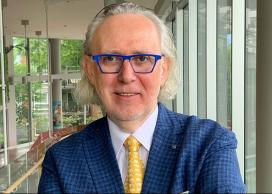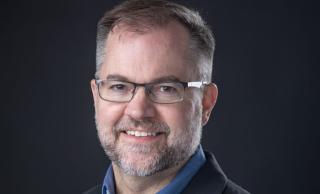Research in focus: Andrei Krassioukov
Learn more about the work of our researchers at UBC

November 20, 2023
Name:
Andrei Krassioukov
My pronouns:
he/him
Title:
Professor and Endowed Chair in Rehabilitation Medicine
Faculty/Department/Unit:
Faculty of Medicine, Department of Medicine, Division of Physical Medicine and Rehabilitation
Location:
UBC Vancouver; International Collaboration on Repair Discoveries (ICORD)
Year I started working at UBC:
2002
Provide an overview of your research in 75 words or less:
I’m a clinician-scientist devoted to helping people with spinal cord injury maintain their cardiovascular health and achieve their top priorities in recovery and rehabilitation. Through innovative and collaborative approaches in education and research, my goal is to make spinal cord injury (SCI) preventable, livable and curable.
What first motivated you (or motivates you) to conduct your research?
During my medical training, I was told that SCI was an end-of-life experience. However, while SCI is life-altering, I was and continue to be astounded and inspired by the drive and adaptability of many of my patients and research participants. I also noticed the misalignment between the recovery priorities set out by people with SCI and the focus of research efforts. This motivates me to design all of my research projects from a patient-centered lens.
What do you hope will change as a result of this research?
Current treatments for autonomic dysfunctions (e.g., cardiovascular, bladder, bowel, and sexual concerns) after SCI are limited, likely because of their focus on symptom management rather than the underlying neurological causes. Our lab is investigating a novel treatment – transcutaneous spinal cord stimulation – for recovery of autonomic function. While more research is needed, we hope that this intervention can serve as a non-invasive and accessible therapy to improve the quality-of-life of people with SCI.
Are there any research collaborators you'd like to acknowledge and why?
I would like to acknowledge the resilience of my Ukrainian collaborators, whom I have been collaborating with since 2022 as a WHO consultant. The ongoing conflict in Ukraine has unfortunately resulted in mass casualties, including complex trauma injuries such as SCI. Not only have my Ukrainian colleagues been at the forefront of SCI rehabilitation in Ukraine, our research collaborations have culminated in a presentation at an upcoming international conference and a multi-site research proposal.
What have you learned during your research that has surprised you the most?
One of my primary research focuses is autonomic dysreflexia (AD). This condition is characterized by unpredictable and potentially debilitating episodes of increased blood pressure, often triggered by daily activities. Without timely management, AD may result in life-threatening complications. Yet, twenty years ago, grant reviewers dismissed my proposal to study cardiovascular health after SCI, stating that the only focus should be curing paralysis. Today, autonomic dysfunction is recognized as a major avoidable cause of morbidity.
- Our people
- Research
- Research in focus






